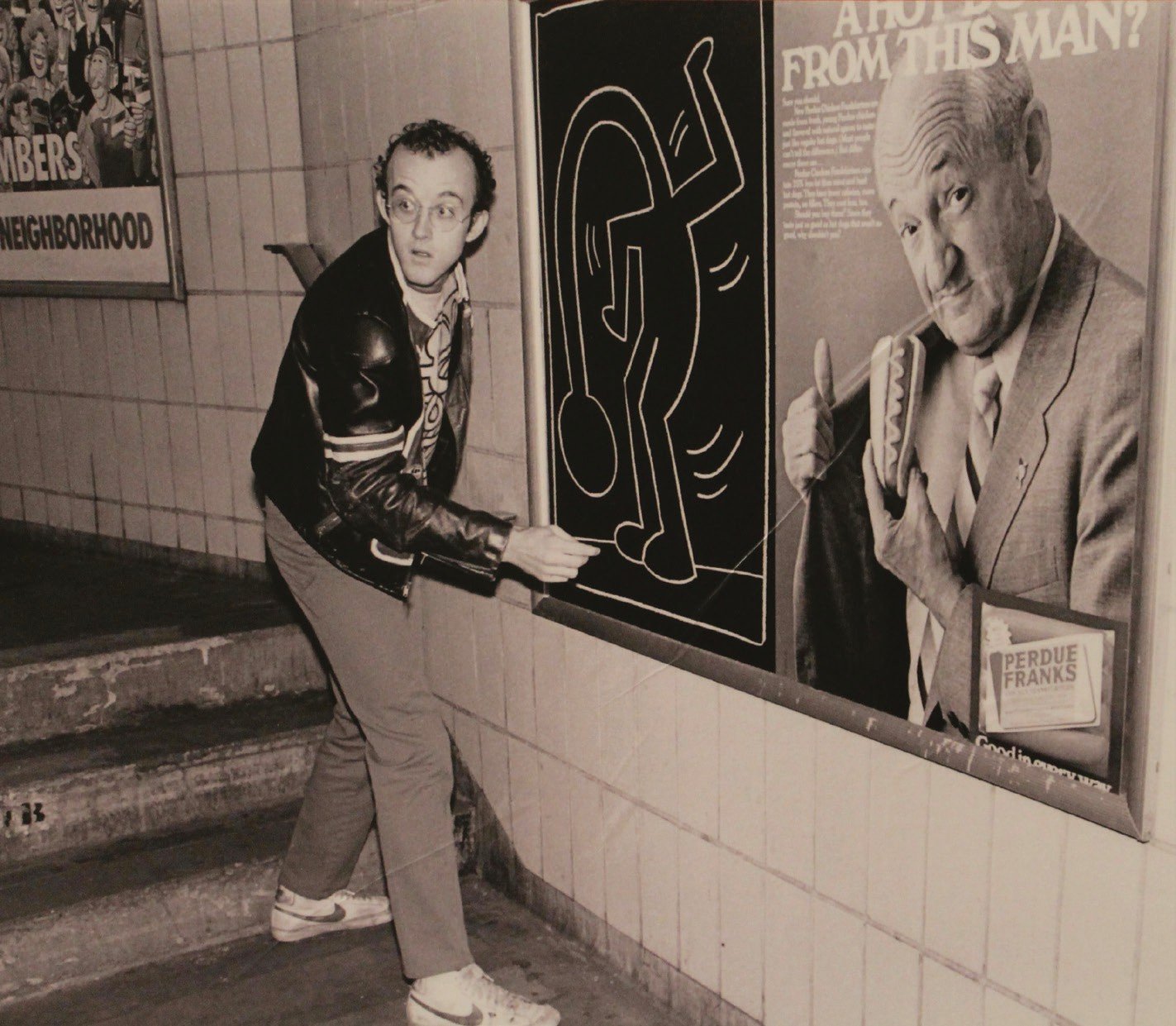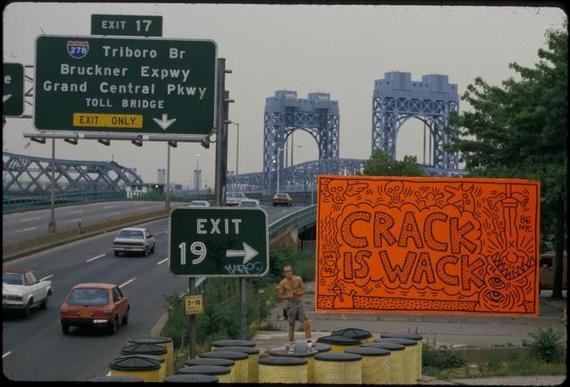Queer Cannabis Club Icon: Keith Haring
Keith Haring’s ethos of making art accessible to everyone is our mission with cannabis. And so, a bit about the life and work of a beautiful soul whose art looks as good on a museum wall as it does on a rolling tray.
In a 1986 interview in Interview with Andy Warhol and Halston, the artist Keith Haring (1958-1990) talks about his first act of rebellion. By age 14, he says, “it got to the point where I tried to smoke tea hoping that would do something. I had no idea where to get pot. Soon after I figured it out and then I started to hang out with college students and then I started hitchhiking and getting out of the town when I was 17.” They love to call pot a gateway drug and for many it is a gateway … to destiny.
In Haring’s short time on Earth, he established an iconography and style that just never really faded. Formally, he investigated “THE LINE,” its gesture, its moment and the importance of movement and attitude with each “act” of art.
His life and work were composed of ideas of respect for all people, love of people, modesty, benevolence, and a very real sense of responsibility. In addition to over 100 gallery and museum shows, he produced more than 50 public artworks in dozens of charities, hospitals, day care centers, and orphanages. And he never did private commissions because he hated the idea of no one being able to see it. Or as Warhol commented, “the boy was allergic to doing anything sensible.”
Who Is Keith Haring?
Born May 4th, 1958, Haring moved from Kuntztown, PA to the Lower East of Manhattan (by way of Pittsburgh and the Jersey Shore) in 1978 to study at SVA. He was inspired by the graffiti culture that was in full swing, especially in the subways. Noticing empty advertising boards in the stations, he began to “tag” them. His style was simple, hard to miss, cheeky and joyful. It didn’t take long before he was embraced by the downtown art scene and then the world.
Haring in the subway
Did Keith Haring Smoke Pot?
Yes! He loved it. It helped him a lot, both with his work and when he became sick, which is why the Haring Foundation released special edition smoking accessories which are for sale (should be for sale) at Farnsworth.
What Causes Did Keith Haring Support?
Haring used his art to bring awareness to social causes. He saw friends being destroyed by crack and painted a “Crack is Wack” billboard on the FDR drive. It was in the local news that night. As AIDS swept through the country, he was on the forefront of awareness and advocating for safe sex at a time when just saying the word AIDS was considered controversial.
The Pop Shop:
He ate shit for opening up a little trinket shop on Lafayette Street (and one in Tokyo) as people thought he was, “selling out.” When in fact it was the opposite. He wanted anybody and everybody to afford his art. Did he ever think his works would be sold in Pot Shops? Maybe!
Crack is Wack, Cannabis is a Flower
Haring believed that art was for everyone as we believe cannabis is for everyone. In form and function, Haring deployed his iconography of dancing figures, crawling babies, barking dogs and yes, A LOT of dicks, with a preternatural genius that did actual good for humankind. It seems hard to imagine now as art is so infused into every inch of our culture, but there was a time when contemporary art only existed in galleries and museums. And because we never stopped seeing his joyful squiggles they’re easy to overlook. But he really accomplished something true and unique.
We leave you, on his birthday, with the last few paragraphs of his last journal entry before he succumbed to AIDS in 1990, because of course, he says it best:
Children know something that not everyone knows. (Or that most people have forgotten.) Children possess a fascination with their everyday existence that is very special and would be very helpful to adults if they could learn to understand and respect it. I think it is very important to be in love with life. I have met people who are in their 70s or 80s and love life so much that, behind their aged bodies, the numbers disappear. Life is very fragile and always elusive. As soon as we think we "understand," there is another mystery. I don't understand anything.
That is, I think, the key to understanding everything. People keep asking me how "success" has changed me. I always say that success has changed people's responses and behavior toward me and that change has affected me, but it has not really changed me. I feel the same on the inside as I did ten years ago. I was as happy then as I am now. -KH








